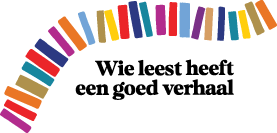René Descartes
17th century scientist René Descartes turned the established sciences upside down by questioning all certainties and building blocks. His critical mind rejected all propositions that could not be proven by means of the Ratio. The most important knowledge of the philosopher was that of the ‘primary causes’ which he called Principia.
In Cartesian philosophy, metaphysics provided the foundation for the explanation of natural phenomena (physics) and related disciplines such as medicine, biology, ethics, etc. Metaphysics is a metaphor of the roots, physics of the trunk and medicine of the branches and leaves of the Cartesian tree. This was diametrically opposed to the Aristotelian theory in which observation was the basis of this knowledge.
Triumviraat: Descartes, Regius en de Raey
Henricus Regius (1598-1679), an Utrecht physician, soon emerged as his representative after the first publications by Descartes. On his own initiative, he had prepared some 200 theses that had to put an end to classical humor theory. In private education he dealt with the new Cartesian physiology. Nobody knew that all disputations were read, checked and rewritten by the spiritual father himself.
De Raey defended four of the total of 12 disputations from 1641 to 1643. It is a breathtaking exercise that shows us how activities of the heart, mind and metabolism were squeezed into Cartesian armor. What originally started with a metaphysically constructed model became a patchwork of metaphysics and experimental artifacts. Descartes eventually got lost in his own created maze.
De hybride Descartes -Aristoteles
De Raey, who once called Descartes his best student, did not give up so quickly.
He understood that Cartesian philosophy offered no way to explain an effective Cartesian medicine. He therefore had to make modifications to the Cartesian concept.
De Raey opted for a strategy that consisted of looking for similarities between Descartes and Aristotle and synthesizing the old and the new doctrine.
Cartesian medicine
From 1654, De Raey held the chair of philosophy at Leiden University. In 1658 he was instructed to give medical lectures. For four years, Raey has taught theoretical medicine in private classes. Each student had to write a Thesis at the end of the curriculum. A few 10-dozen medical theses must have seen the light in this period. The only copy that has survived for three and a half centuries has recently been found by the author
It concerns 45 statements on the subject of fevers by his student Israel Conrat, which he defended on 5 February 1659 in the large auditorium at Rapenburg.
De Raey postulates an "endocrine" relationship between mind and body. The anima is stirred by thoughts and emotions and sends spirit through the body in response. The spirit is sent selectively to all secretory organs and can cause fever spikes in the event of excessive stimulation. The secreted fluids mix with blood and form fermentation products, stimulating the metabolic processes. With this interpretation of the soul-body relationship, De Raey takes an important step in the direction of a psychosomatic pattern of thought.
17th century scientist René Descartes turned the established sciences upside down by questioning all certainties and building blocks. His critical mind rejected all propositions that could not be proven by means of the Ratio. The most important knowledge of the philosopher was that of the ‘primary causes’ which he called Principia.
In Cartesian philosophy, metaphysics provided the foundation for the explanation of natural phenomena (physics) and related disciplines such as medicine, biology, ethics, etc. Metaphysics is a metaphor of the roots, physics of the trunk and medicine of the branches and leaves of the Cartesian tree. This was diametrically opposed to the Aristotelian theory in which observation was the basis of this knowledge.
Triumviraat: Descartes, Regius en de Raey
Henricus Regius (1598-1679), an Utrecht physician, soon emerged as his representative after the first publications by Descartes. On his own initiative, he had prepared some 200 theses that had to put an end to classical humor theory. In private education he dealt with the new Cartesian physiology. Nobody knew that all disputations were read, checked and rewritten by the spiritual father himself.
De Raey defended four of the total of 12 disputations from 1641 to 1643. It is a breathtaking exercise that shows us how activities of the heart, mind and metabolism were squeezed into Cartesian armor. What originally started with a metaphysically constructed model became a patchwork of metaphysics and experimental artifacts. Descartes eventually got lost in his own created maze.
De hybride Descartes -Aristoteles
De Raey, who once called Descartes his best student, did not give up so quickly.
He understood that Cartesian philosophy offered no way to explain an effective Cartesian medicine. He therefore had to make modifications to the Cartesian concept.
De Raey opted for a strategy that consisted of looking for similarities between Descartes and Aristotle and synthesizing the old and the new doctrine.
Cartesian medicine
From 1654, De Raey held the chair of philosophy at Leiden University. In 1658 he was instructed to give medical lectures. For four years, Raey has taught theoretical medicine in private classes. Each student had to write a Thesis at the end of the curriculum. A few 10-dozen medical theses must have seen the light in this period. The only copy that has survived for three and a half centuries has recently been found by the author
It concerns 45 statements on the subject of fevers by his student Israel Conrat, which he defended on 5 February 1659 in the large auditorium at Rapenburg.
De Raey postulates an "endocrine" relationship between mind and body. The anima is stirred by thoughts and emotions and sends spirit through the body in response. The spirit is sent selectively to all secretory organs and can cause fever spikes in the event of excessive stimulation. The secreted fluids mix with blood and form fermentation products, stimulating the metabolic processes. With this interpretation of the soul-body relationship, De Raey takes an important step in the direction of a psychosomatic pattern of thought.















